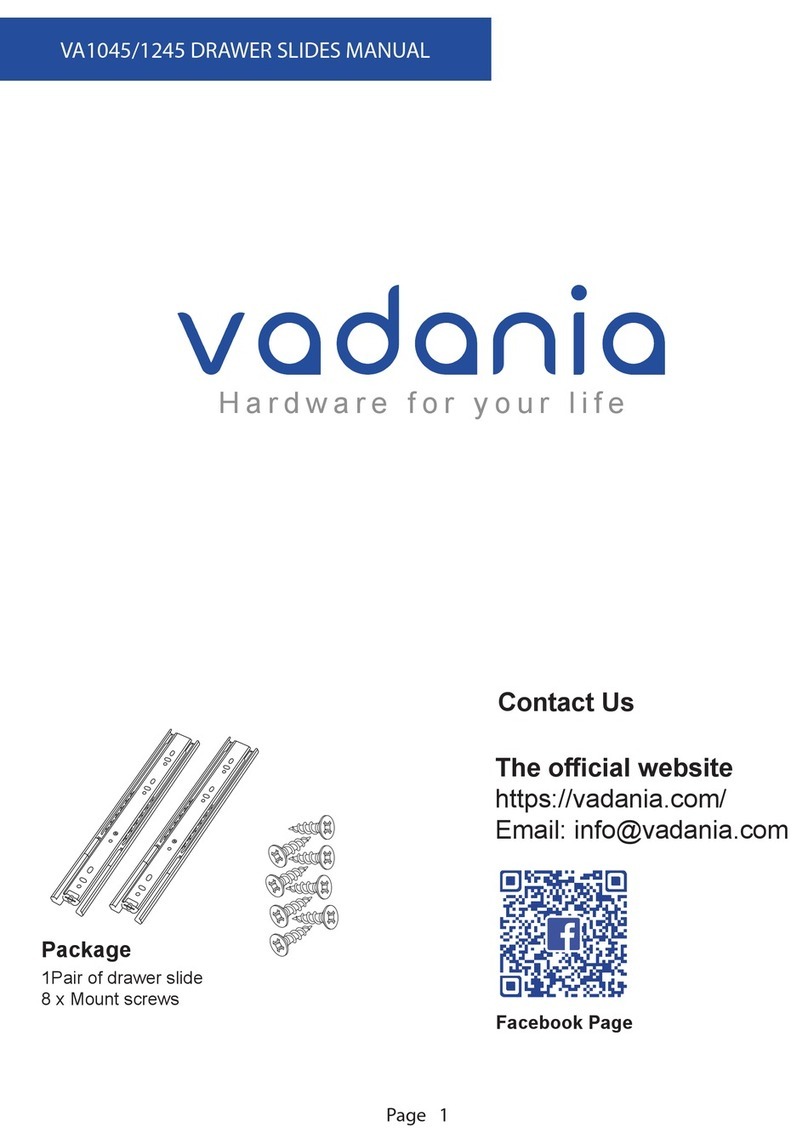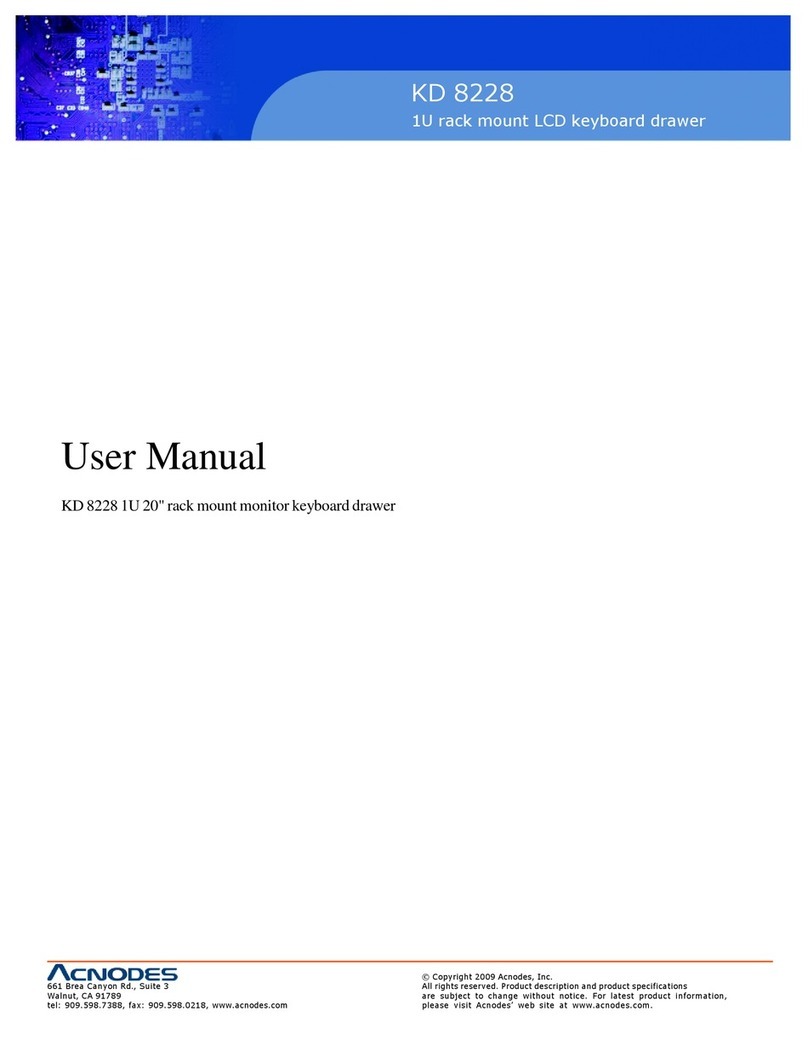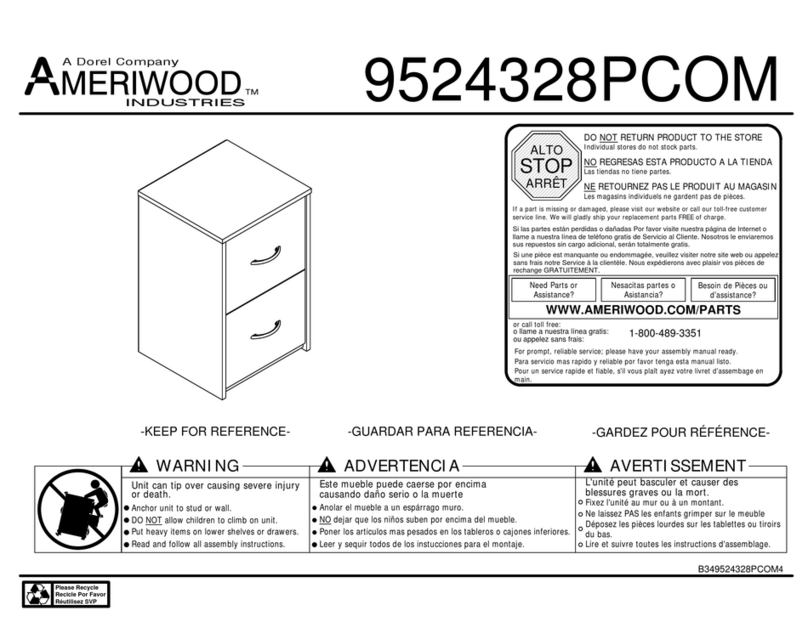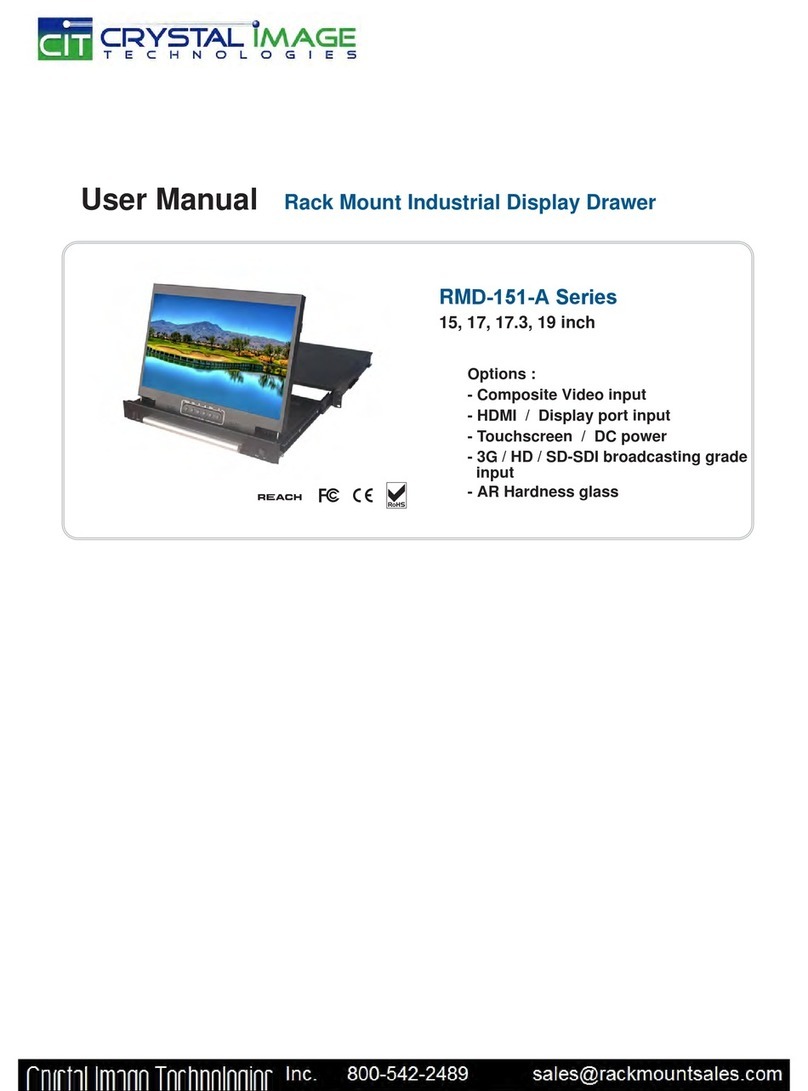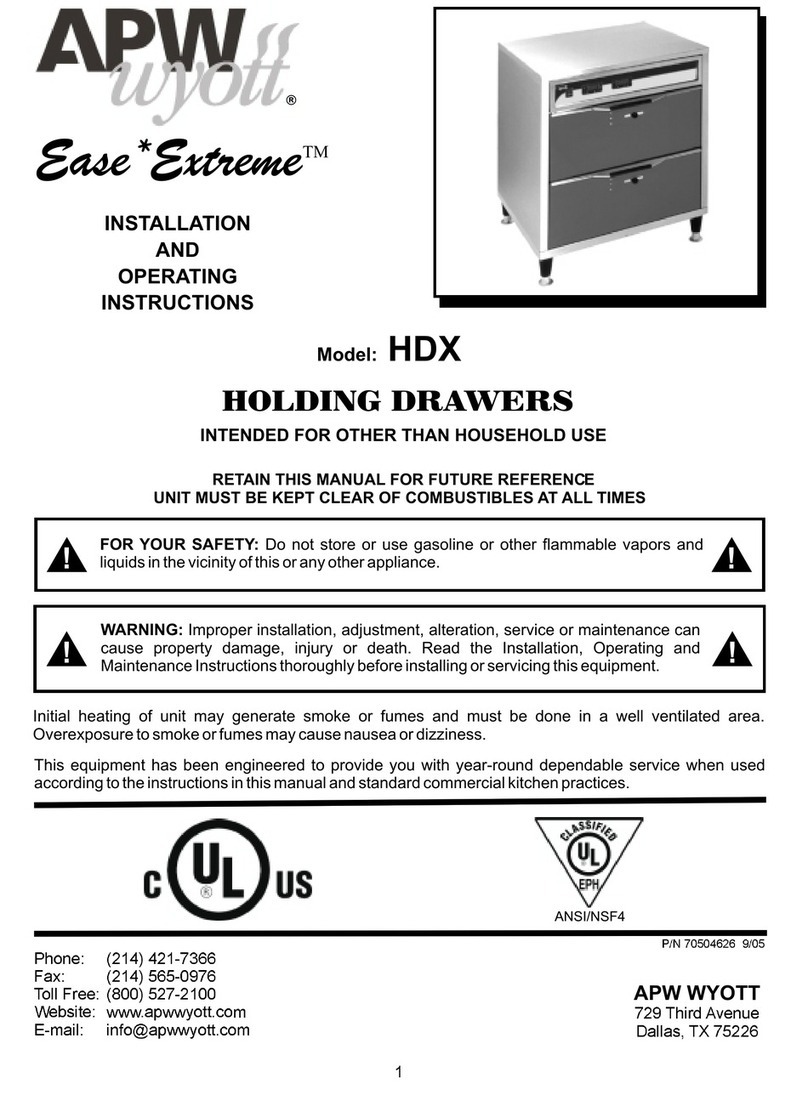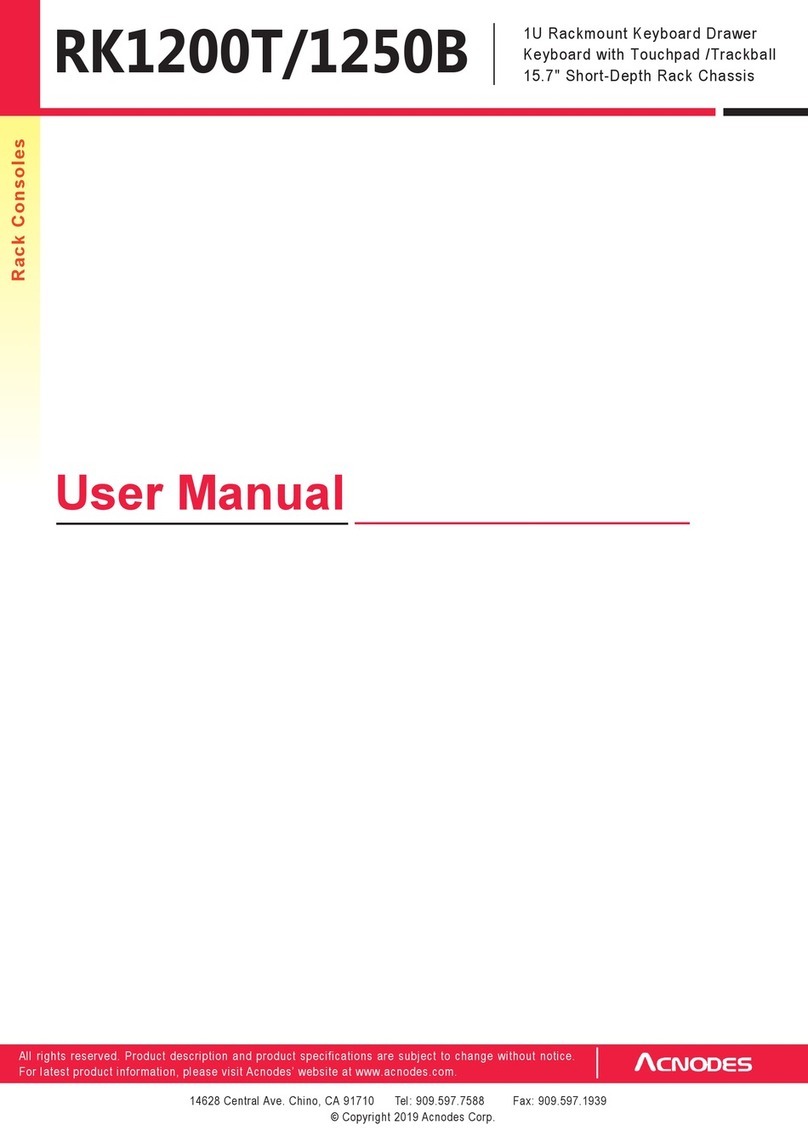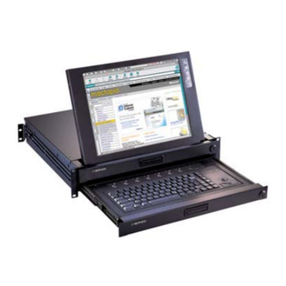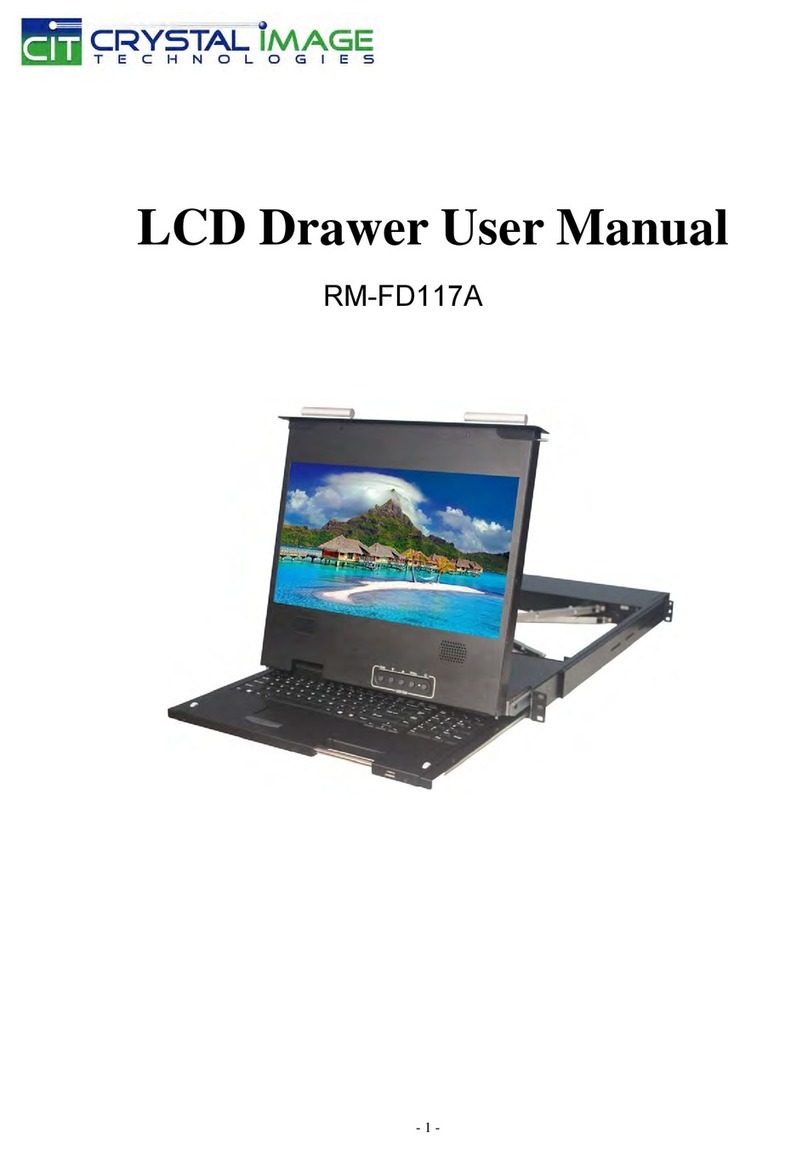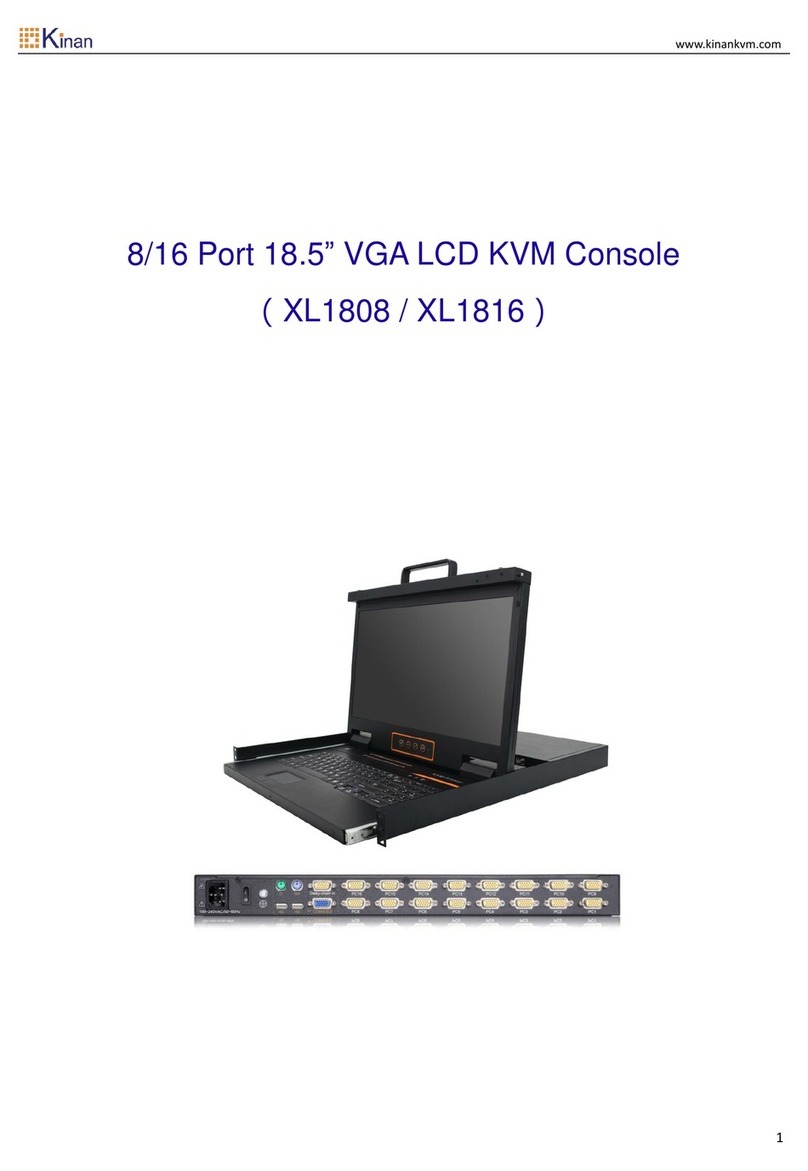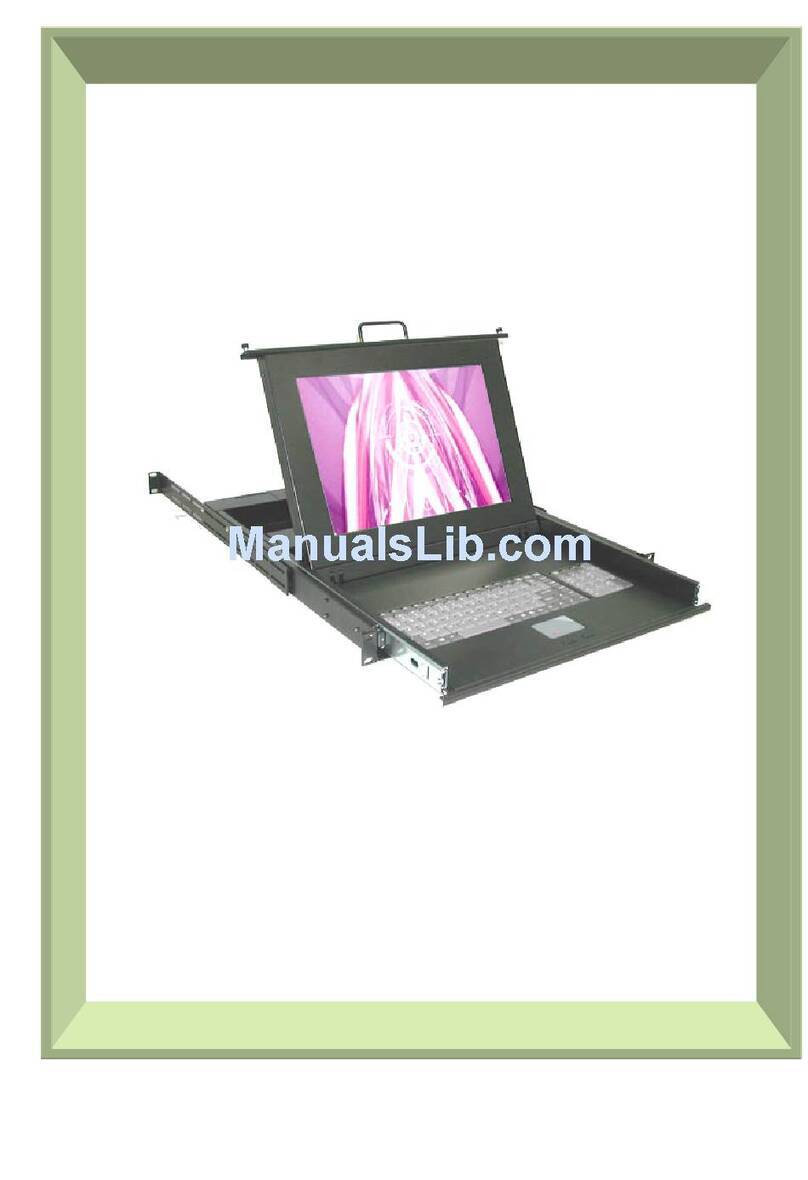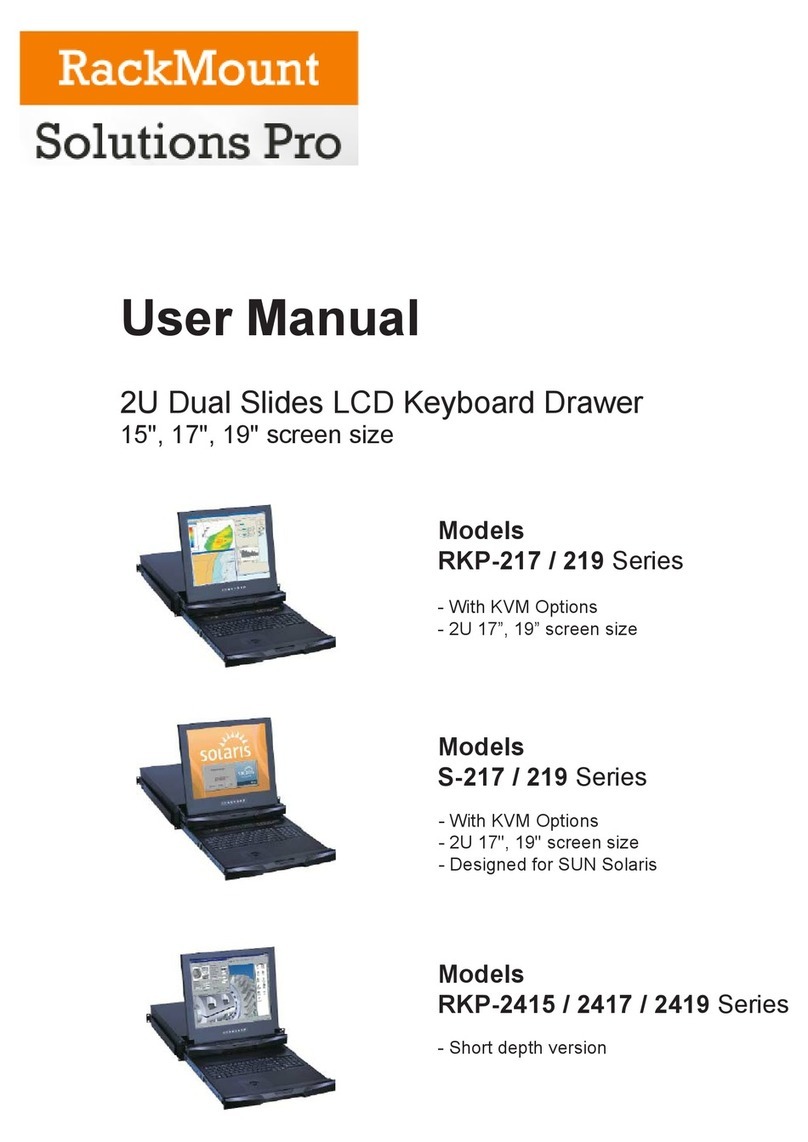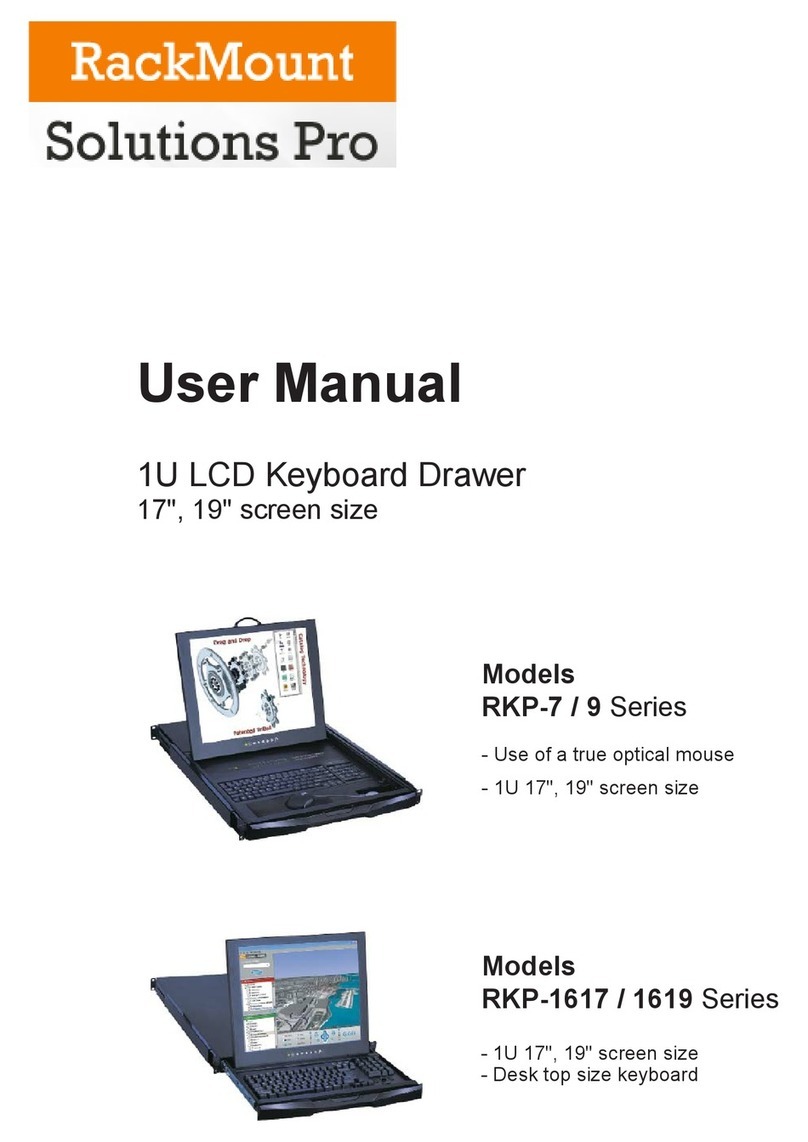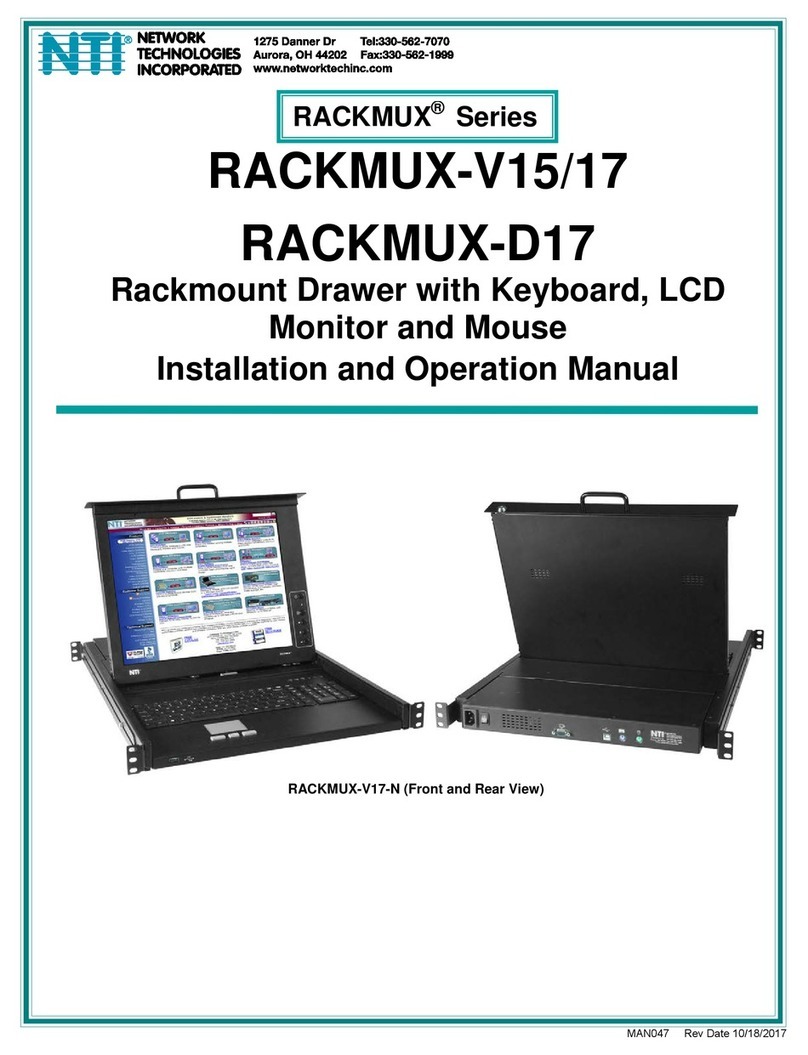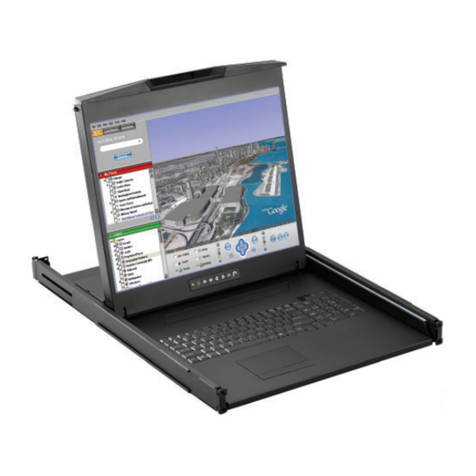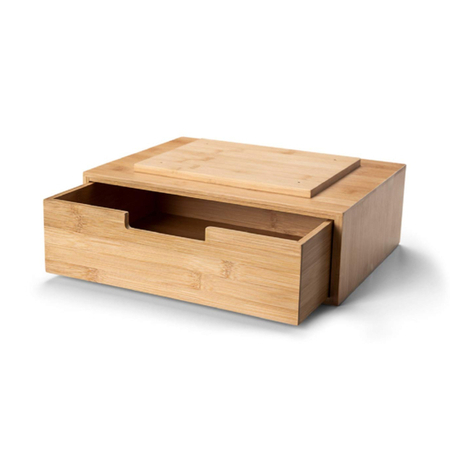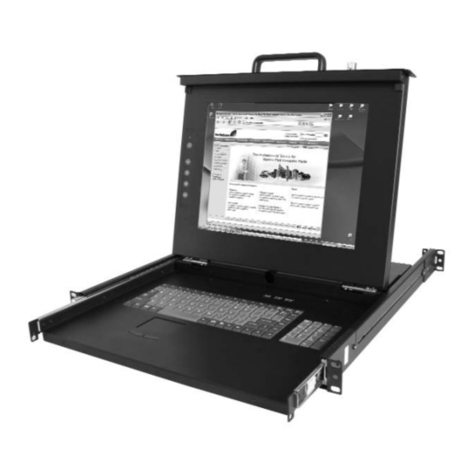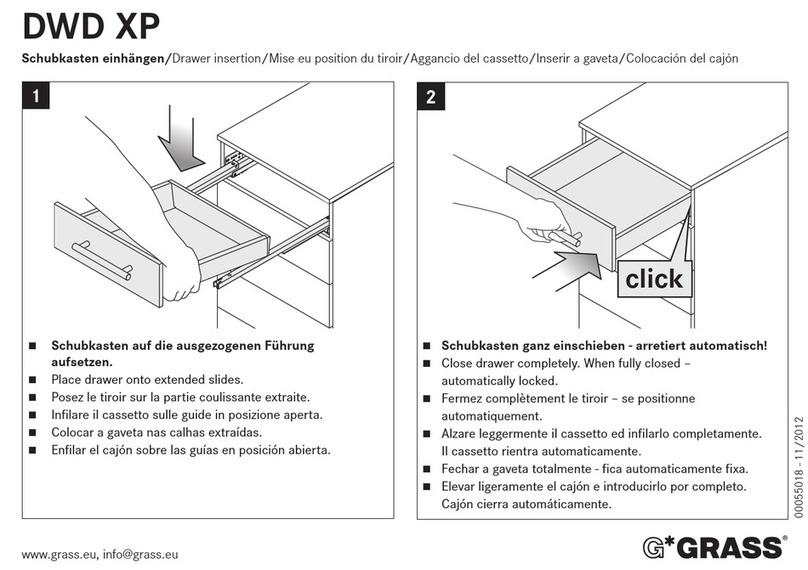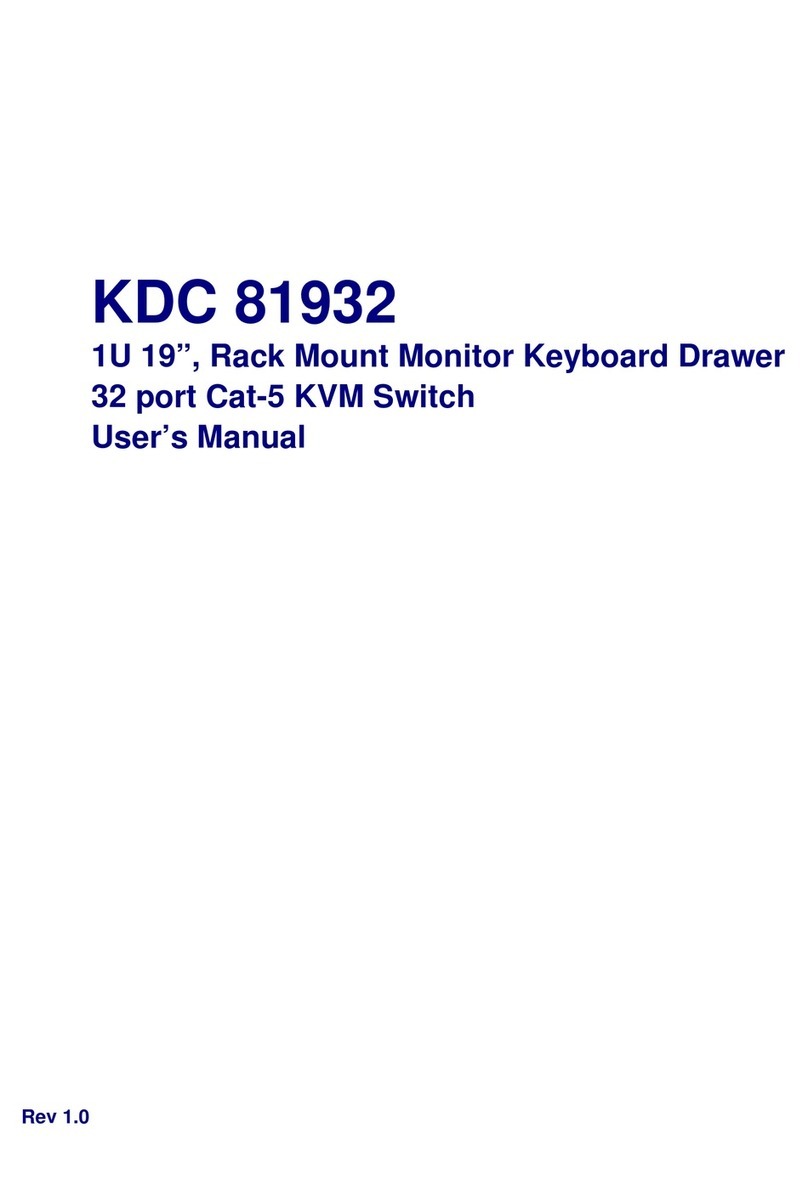
Rev. JUL-02
Important Safeguards
Please read all of these instructions carefully before you use the device.
Save this manual for future reference.
zUnplug the LCD Keyboard Drawer with KVM switch from the power outlet before cleaning.
zDo not spray liquid cleaners or aerosol directly on the device. Wet a cloth with a neutral detergent (e.g. clean
water) and squeeze it tight, then clean the screen slightly with it.
zDo not expose the LCD Keyboard Drawer with KVM switch directly to rain, water, moisture or sunlight.
zAvoid pressure on the LCD screen to prevent permanent damage to the display.
zDo not attempt to service the device yourself. Improper operation may void your warranty. Refer all servicing to
qualified service personnel.
zSafe storage environment of the LCD Keyboard Drawer with KVM switch is ranging between –20oC and 60oC.
Permanent damage could occur if the LCD Keyboard Drawer with KVM switch is stored outside the safe range.
zUnplug the LCD Keyboard Drawer witch KVM switch immediately and call a qualified service personnel under
the following conditions:
1. The VGA signal cord is frayed or damaged.
2. If the monitor has been exposed to rain, liquid or water.
3. If the monitor has been dropped or the casing has been damaged.
What the warranty does not cover
1. Any product, on which the serial number has been defaced, modified or removed.
2. Damage, deterioration or malfunction resulting from:
a) Accident, misuse, neglect, fire, water, lightning, or other acts of nature, unauthorized product
modification, or failure to follow instructions supplied with the product.
b) Repair or attempted repair by anyone not authorized by us.
c) Any damage of the product due to shipment.
d) Removal or installation of the product.
e) Causes external to the product, such as electric power fluctuation or failure.
f) Use of supplies or parts not meeting our specifications.
g) Normal wear and tear.
h) Any other causes which does not relate to a product defect.
3. Removal, installation, and set-up service charges.
